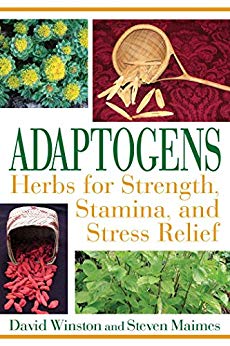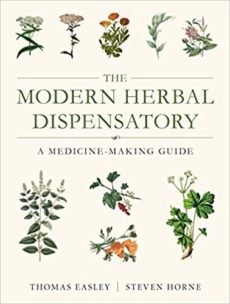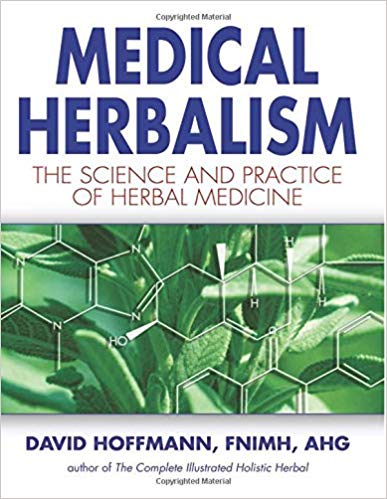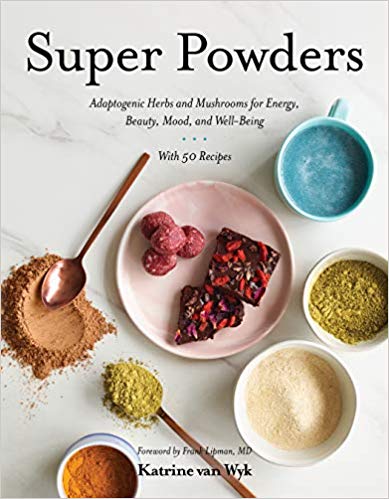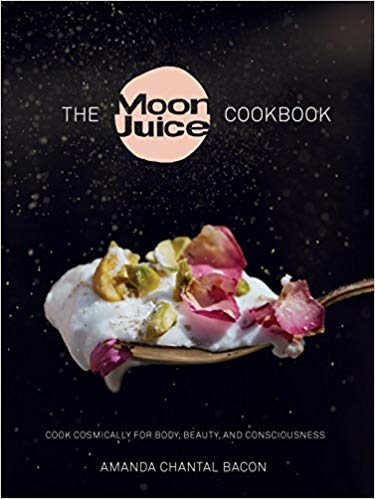
Super duper trendy, adaptogens are everywhere. Chances are if you follow five people in the wellness space, at least three of them have mentioned adaptogens. Pervasive as they may be, I still get asked about Adaptogens all the time. Most commonly you guys want to know about my personal use of these supplements, and more importantly, you want to know what the hell they actually are. Today I’m breaking it down: what they are, how they work, which ones I use, and how to incorporate them into your wellness routine.
Adapta-who?
First things first, Adaptogens aren’t new. But like many other things in the wellness space, old becomes new again. With a shift to more functional, holistic medicine/healthcare, natural remedies are back on the table for many. While penicillin is totally my jam, our grandparents and great-grandparents were onto something with their herbal medicine and holistic approaches. I love this shift towards a marriage of both.
Perhaps the most confusing aspect of the adaptogen conversation is the desire to pinpoint exactly what adaptogen people are talking about. And it’s rarely ever just one. The word “adaptogen” refers to a whole host of medicinal mushrooms, herbs, spices, or tinctures which work with your immune system to help it adapt to environmental stressors. While there isn’t nearly as much research as you might find for conventional pharmaceuticals, there is some research to show that various adaptogens help reduce stress, support adrenal function (decreasing fatigue), and increase cognitive function.
Supa-dupa stars 🌟
These sound like superstars, right? I know! And while adaptogens can be a great addition to your hormonal biohacking strategy— the use of supplements to heal hormonal imbalances and reduce inflammation caused by excess cortisol — they are not a substitute for deeper healing. You’ll want to use these in addition to a healthy diet, exercise, and (preferably) a good nights sleep. Additionally, if you have chronic hormone imbalances my first suggestion is to seek advice from your medical practitioner; there are tests they can run which will give you a better picture of what you truly need.
The one other thing that I feel it’s important to note is that every herb, adaptogenic or not, has different dosing guidelines. For example, maca, while great, is not meant for longterm use. Also note, none of these herbs are recommended while breastfeeding unless you are on a specific protocol in consultation with your doctor. So it’s important to look at proper resources, and be sure to continually check in with your body.
How do they work?
Let’s get a little nerdy, ok?
Research has found that adaptogens work through two systems in the body, the HPA axis (hypothalamic-pituitary-adrenal axis), and the SAS (sympathoadrenal system). The former controls endocrine function, some immune function, and the nervous system. The latter addresses our stress reactions (think fight or flight). What this means in the simplest terms is that adaptogens can be beneficial to people with HPA axis dysregulation as a result of chronic stress, and some adaptogens can help support thyroid function as well (Ashwagandha, for example).
Here’s what happens: You encounter a stressor ➾ the HPA axis releases hormones (*CRH ➾ACTH) ➾ which stimulate cortisol + adrenaline ➾ your body address the stressor. And this is perfectly fine unless continued stress retriggers this response and excess cortisol builds up in the system ➾ inflammation ➾ a whole host of negative health outcomes.
Now, add in an Adaptogen and here’s what happens: Adaptogens interact at the HPA axis juncture, inhibiting the production of CRH ➾ACTH, so the overall stress response is reduced, and excess cortisol avoided. I like to think of it like this: Adaptogens bide you time to actually deal with the thing that is stressing you out before you become a cortisol induced hot-mess. Add to that the beneficial qualities of each individual adaptogen, and you’ve got yourself a recipe for overall health.
But here’s the thing… you can absolutely have good health without adaptogens in your arsenal. They are in the supplement category for a reason; they are here to enhance your current wellness practice, not to replace healthy practices which might naturally reduce stress. And certainly not to replace good sleep, deep breathing, and regular exercise.
Which Adaptogens?
Usually, once people know what an adaptogen is, and how they work, the next question is what adaptogen they should be taking. To that I say… I don’t know. 🤷🏽♀️ Remember, I’m not your doctor. But I can tell you a little bit about some of the more common adaptogens I see floating around the wellness space, as well as what I like to use and how.

Ashwagandha
Everybody’s favorite little shrubby root has been linked to health improvements ranging from oxidative stress reduction to improving sexual function in women (buh-bye low libido). Ashwagandha supports your nervous system, boots immunity, and is a rich source of iron. It is also linked to reducing anxiety in adults, has anti-inflammatory properties, and may even help with insomnia. This adaptogen is probably one of the most researched of its type and has a long history of use within Ayurvedic medicine. Most people new to adaptogens will start here.
If you are sensitive to the Nightshade group or have auto-immune dysfunction, you may want to use caution with Ashwagandha. Baby girl is a member of the family. I will say, I’ve seen some doctors say that many of their patients do well with Ashwagandha and reap the anti-inflammatory benefits, but again… I’m not your doctor. So ask yours.
Fe’Lix’s Jam ➾ 1/2 teaspoon added to a latte. Ashwagandha is strong… so I pretty much only like this with a chai latte or in a milk-based smoothie.
Chaga
I think of Chaga as a grounding adaptogen. It’s rich in B Vitamins, flavonoids, enzymes, minerals, and phenols. It supports overall well-being and is also quite high in antioxidants. Chaga is even linked to tumor growth suppression. I mean, it’s the bomb. Even still, Chaga is perhaps my least favorite of these listed for the simple reason that it is traditionally a long brew process (for best results), meaning it’s intended to be brewed over low heat for 6-8 hours and then strained and consumed warm. Now, my initial response is “ain’t nobody got time for that,” but it definitely has a place in a more meditative, self-care practice. There are some brands that make blends that are better for on the go (like this), but I admittedly rarely manage to keep this one in the rotation.
Fe’Lix’s Jam ➾ When I remember, add about 1tsp into my morning coffee. Chaga tastes earthy + slightly bitter, which is precisely how I like my coffee, so I don’t notice it at all.
Cordyceps
Cordyceps are considered a yang tonic and have been used in Traditional Chinese Medicine for ages. It’s not actually a mushroom, but it is in the fungus taxonomy and typically gets lumped with other mushrooms. It is used to support mental clarity, athletic endurance, sexual energy, and the immune system. Cordyceps work to provide an energetic boost by increasing the body’s ability to take in oxygen. This helps with cellular production, specifically of white blood cells called NK cells (natural killer), which help your body fight off viruses and infections. Hence, the immunity boost. Cordyceps inevitably get forgotten around here come Spring, but Fall-through-Winter I keep it at the front of the supplement cabinet.
Fe’Lix’s Jam ➾ add about 1/2 tsp into my morning smoothie +/or coffee before working out. The taste is practically undetectable and I like to believe it helps my athletic abilities. (I’ll take it!)
Maca
You probably hear a lot of women talking about this one, because for many women it solves period problems. It can help with low energy levels, low sex drive, poor focus, mood swings, and PMS symptoms. The thing to remember about maca (and most of these) is that you can’t take it once and expect overnight results. You should be taking maca for a few weeks before you expect to truly see results. That’s just enough time to prepare for your next cycle. Additionally, maca is meant to be cycled. This means, not taken indefinitely. As such, it’s good to take it for a few months and then take a break; always checking in with your body.
I have used maca to help regulate my cycle, especially postpartum as I am prone to not getting my period back for a long time and when it returns it’s like “meh.” Like 60 days between cycles meh. I found that maca helped get things back in order.
Fe’Lix’s Jam ➾ Maca has such a mild flavor it works in everything. I’ve added it to waffles, smoothies, coffee, and protein balls. I most commonly add 1-2tsp to my morning smoothie for a few months and then I cycle it out.
Reishi
Reishi is like the ultimate hormone balancing mushroom. This antioxidant-rich mushroom has been praised for it’s anti-tumor, anti-androgenic, anti-aging, and immune-boosting effects. It has been shown to reduce PCOS symptoms and supports the cardiovascular system as well. Japanese and Chinese researchers believe Reishi to have a regulatory impact on the immune system. Basically, bow down before this little ‘shroom.
Reishi is also a super common adaptogen for those who are relatively new. It pairs well with Cordyceps and has an earthy + bitter profile.
Fe’Lix’s Jam ➾ When I remember, I add about 1tsp into my morning coffee. Or to my afternoon earl grey. This is great for an afternoon pick me up without incorporating caffeine.
A word on dosage
The key here is this: start small, check in with your body, make adjustments. Most brands will tell you where to start, but 1/2 teaspoon – 1 teaspoon is generally a good place. But this entirely depends on your health, wellness goals, and personal sensitivity to adaptogens. It’s also important to note that while adaptogens are nontoxic in therapeutic dosages, everyone’s body is different. One size does not, and never will, fit all. So read, read, and read some more.
Looking for more resources?
In addition to the several citations (linked throughout), it’s sometimes nice to just read a book. Especially one that can lay it all out in an easy to read format. Here are a few great resources. I’ve read through each of these and found them informative and useful in my exploration of adaptogens.
Explanatory Books
- Adaptogens: Herbs for Strength, Stamina, and Stress Relief
- The Modern Herbal Dispensatory: A Medicine-Making Guide
- Medical Herbalism: The Science Principles and Practices Of Herbal Medicine
Recipe Books
- Super Powders: Adaptogenic Herbs + Mushrooms for Energy, Beauty, Mood, and Well-Being
- Adaptogens: 75+ Herbal Recipes and Elixirs to Improve Your Skin, Mood, Energy, Focus, and More
- The Moon Juice Cookbook: Cook Cosmically for Body, Beauty, and Consciousness
The bottom line
It comes down to this, you don’t need adaptogens in your wellness cabinet to be at optimal health, but they sure do help! And in order for adaptogens to do their best work in supporting you, you have to be doing some of the baseline work. I cannot express enough: eat real food, drink more water than you think you need, sleep more than you currently are (you’re probably chronically fatigued, boo.. and it’s got to stop), and try to eliminate stressors.
Then, if you’d like to incorporate adaptogens into your diet /biohacking health routine, start small and pay close attention. And pick up one of the above resources from your local library or Amazon. I saw a few of them on overdrive; it was L.A.Public Library though, and they tend to have these popular health books when my local library does not.
So tell me, are you into the whole Adaptogen thing? Tell me in the comments! If so, what’s your favorite way to incorporate them into your diet?
*PS– I intentionally didn’t inundate you with all the hormone names & pathways, but if you’re just dying to know, CRH = Corticotropin-releasing hormone and ACTH = Adrenocorticotropic hormone. See, you didn’t really need to know that. But, there it is… in case you want to go down the Google hole.
Xo, Kimberly Fe'Lix
